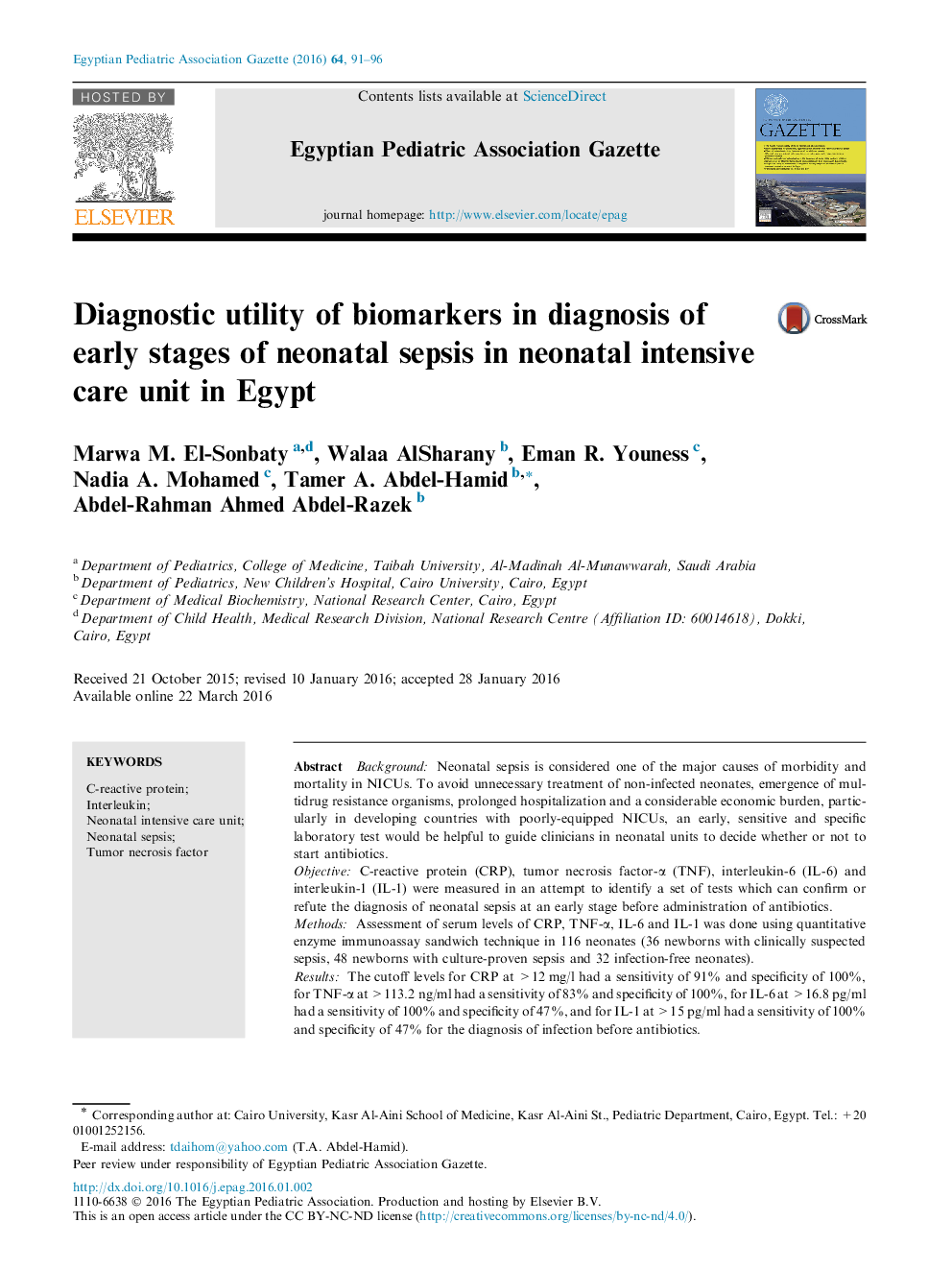| Article ID | Journal | Published Year | Pages | File Type |
|---|---|---|---|---|
| 4153573 | Egyptian Pediatric Association Gazette | 2016 | 6 Pages |
BackgroundNeonatal sepsis is considered one of the major causes of morbidity and mortality in NICUs. To avoid unnecessary treatment of non-infected neonates, emergence of multidrug resistance organisms, prolonged hospitalization and a considerable economic burden, particularly in developing countries with poorly-equipped NICUs, an early, sensitive and specific laboratory test would be helpful to guide clinicians in neonatal units to decide whether or not to start antibiotics.ObjectiveC-reactive protein (CRP), tumor necrosis factor-α (TNF), interleukin-6 (IL-6) and interleukin-1 (IL-1) were measured in an attempt to identify a set of tests which can confirm or refute the diagnosis of neonatal sepsis at an early stage before administration of antibiotics.MethodsAssessment of serum levels of CRP, TNF-α, IL-6 and IL-1 was done using quantitative enzyme immunoassay sandwich technique in 116 neonates (36 newborns with clinically suspected sepsis, 48 newborns with culture-proven sepsis and 32 infection-free neonates).ResultsThe cutoff levels for CRP at >12 mg/l had a sensitivity of 91% and specificity of 100%, for TNF-α at >113.2 ng/ml had a sensitivity of 83% and specificity of 100%, for IL-6 at >16.8 pg/ml had a sensitivity of 100% and specificity of 47%, and for IL-1 at >15 pg/ml had a sensitivity of 100% and specificity of 47% for the diagnosis of infection before antibiotics.ConclusionThe area under ROC curve (AUC) of TNF and CRP in the diagnosis of sepsis was superior to determinations of IL-1 and IL-6. From our data analysis and based on our financial backgrounds, we can conclude that abnormal of CRP levels together with immature-to-total neutrophil ratio above 0.2 with or without elevated IL-1, IL-6 or TNF can be used as early markers of sepsis in neonates.
